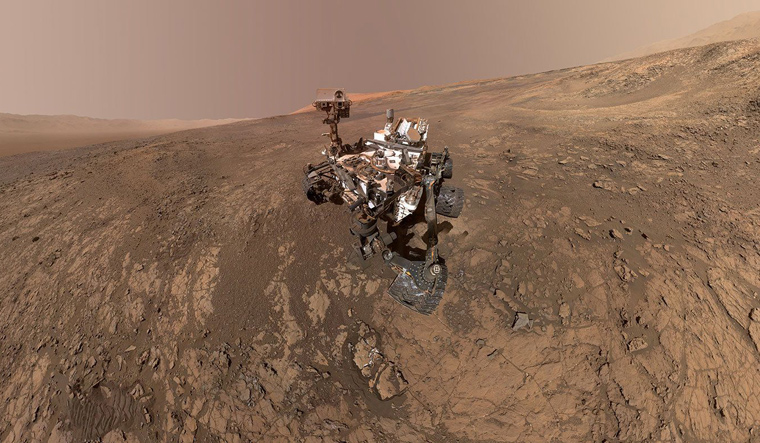Ancient Mars had an ample supply of key ingredients for microbes to thrive under its surface for millions of years, a study has found.
Lacking energy from sunlight, subterranean microbes on Earth—known as subsurface lithotrophic microbial ecosystems (SliMEs)—often get their energy by peeling electrons off molecules in their surrounding environments.
Dissolved molecular hydrogen is a great electron donor and is known to fuel SLiMEs on Earth.
"We showed, based on basic physics and chemistry calculations, that the ancient Martian subsurface likely had enough dissolved hydrogen to power a global subsurface biosphere," said Jesse Tarnas, a graduate student at Brown University in the US.
The study, published in Earth and Planetary Science Letters, shows that radiolysis, a process through which radiation breaks water molecules into their constituent hydrogen and oxygen parts, would have created plenty of hydrogen in the ancient Martian subsurface.
The researchers estimate that hydrogen concentrations in the crust around four billion years ago would have been in the range of concentrations that sustain plentiful microbes on Earth today.
"Conditions in this habitable zone would have been similar to places on Earth where underground life exists," said Tarnas.
The findings do not mean that life definitely existed on ancient Mars, but they do suggest that if life did indeed get started, the Martian subsurface had the key ingredients to support it for hundreds of millions of years, researchers said.
The work also has implications for future Mars exploration, suggesting that areas where the ancient subsurface is exposed might be good places to look for evidence of past life.
Since the discovery decades ago of ancient river channels and lake beds on Mars, scientists have been tantalised by the possibility that the red planet may once have hosted life.
However while evidence of past water activity is unmistakable, it is not clear for how much of Martian history water actually flowed.
Climate models for early Mars produce temperatures that rarely peak above freezing, which suggests that the planet's early wet periods may have been fleeting events.
That is not the best scenario for sustaining life at the surface over the long term, and it has some scientists thinking that the subsurface might be a better bet for past Martian life.
Researchers looked at data from the gamma ray spectrometer that flies aboard NASA's Mars Odyssey spacecraft. They mapped out abundances three radioactive elements -- thorium, potassium and uranium -- in the Martian crust.
The decay of those provides the radiation that drives the breakdown of water. Since the elements decay at constant rates, the researchers could calculate the abundances 4 billion years ago.
Geological evidence suggests there would have been plenty of groundwater bubbling about in the porous rocks of the ancient Martian crust.
Researchers conclude that Mars likely had a global subsurface habitable zone several kilometers in thickness.
In that zone, hydrogen production via radiolysis would have generated more than enough chemical energy to support microbial life, based on what's known about such communities on Earth, they said.
The zone would have persisted for hundreds of millions of years, they said.


